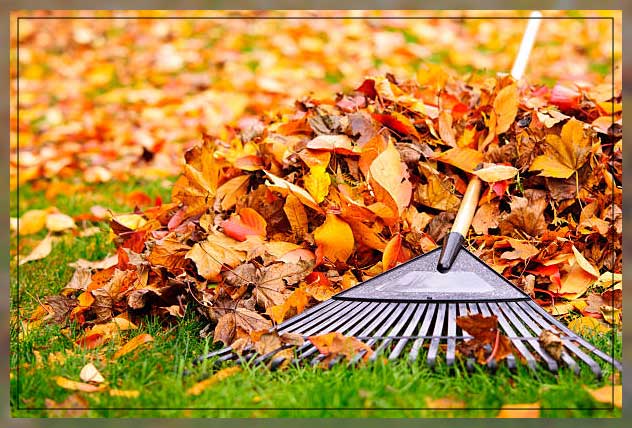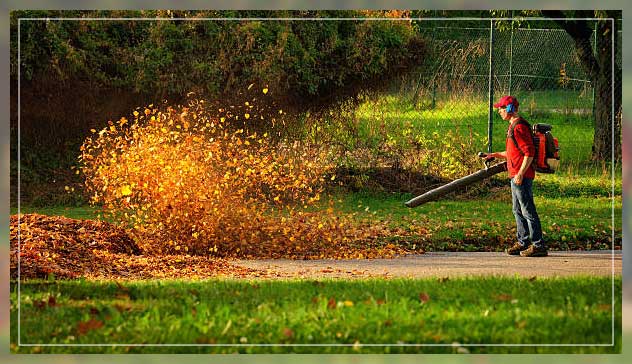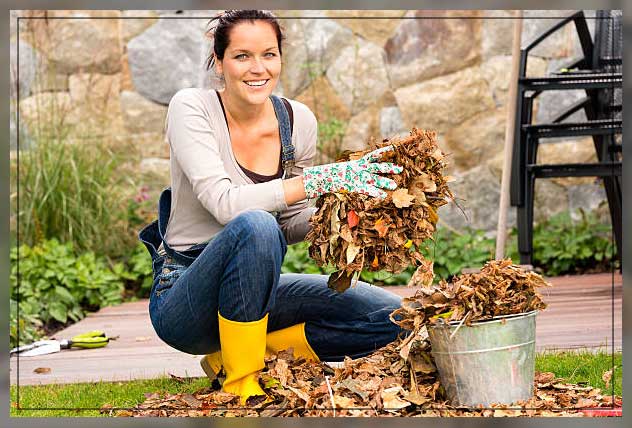Fall is here and it will soon be winters. If you want to clean your garden, a fall garden cleanup is the ideal time.
It will get uncomfortably cold in the winters and with the cleanup in fall, there will be better garden health in spring.
Begin it after the first killing frost.
Though, if there is no frost in your specific region, the best time for a cleanup is when you see the annual plant dying or fading away.
This article discusses what you need to do in a fall garden cleanup.
Keep reading to know the essentials of cleaning your garden.

What Vegetables Can Stay?
While the first step in the cleanup is to remove vegetables in your vegetable garden that are spent plants or diseases, you do not have to remove all of them.
Some of the vegetables are hardy or semi hardy.
Hence, they can easily stay in the ground even after frost if they are not diseased.
Hardy vegetables can withstand frost of air temperatures that are usually below 28°F.
This includes the likes of spinach, garlic, broccoli, leeks, cabbage, fava beans, radish, and turnip.
Similarly, there are semi-hardy vegetables.
These can tolerate a light frost and also air temperatures that range between 28°F and 32°F.
Semi hardy vegetables are parsnip, cauliflower, carrots, beets, celery and parsley.
Even among these, for some like carrots, beets and parsnips, the roots will be able to tolerate the temperatures however, the tops will die back.
Usually the cold weather will not kill the hardy plants.
However, it will still slow down their growth.
Snow in fact acts as an insulating mulch.
It also warms up the soil for the tougher plants.
Besides the hardy vegetables, even the tender ones can be saved from frost for a couple of months.
This includes bok choy, cucumbers, radish, lettuce, squash and beans.
In order to protect them during this time, cover the vegetables with high or low tunnels.
These are made from clear plastic and metal hoops, or you can use cloches and row covers.
To further protect the plants use mulch from yard debris or cardboard.
However, for other plants, you will need to cleanup.
Let’s know more on that below!

Fall Garden Cleanup
Step 1: Remove debris and spent plants
There is no place for diseased plants in the garden.
You need to remove and dispose of it in the trash.
Never add it into the compost.
They need to be removed because they can invite any insects and diseases.
You need to chop off the beans and peas at ground level.
Leaving their nitrogen fixing roots behind helps to feed the crops in the next year.
Step 2: Start Composting
Break down the material collected into small pieces by shredding it.
Add it to the compost pile to make a rich organic matter that the plants receive.
Keep every plant away that has any infection or disease.
Those with bugs or diseases need to be bagged off and kept away from your garden.
Step 3: Weed it Out
Weeding is even more important during the late summer and autumn than the rest of the growing seasons.
So right before you are packing up and removing plants, weed it out one last time.
A single weed can mature to produce hundreds of weeds therefore, a thorough check is absolutely necessary one last time.
Weeds like thistle and crabgrass can develop seed heads in the late summer and fall.
Therefore, you should not let any weeds remain in the garden beds.
Help loosen the soil by watering your garden a few hours before.
When the soil is hard and dry, it is difficult to weed it out but when the soil is moist and loose, it is easier.
Step 4: Planting new garden beds
After composting and weeding, it is time to plant new garden beds.
You do not have to dig necessarily.
Set your mower as low, scalp the grass and then cover it with a thick layer of newspapers.
Cover the newspapers with compost and to complete it all, top it off with chopped leaves.
Now you may have planting beds full of earthworms by the time spring rolls in.

Steps to Fall Garden Cleanup
Step 5: Using autumn leaves
The autumn leaves in your garden are a source of natural mulch.
Rake them in fall or shred them.
Run over the leaves with lawn mower and then rake back into the perennial and shrub beds.
These leaves will form mulch and also leaving them to provide shelter to overwintering insects, pollinators and wildlife is another important use.
Moreover letting them be can make leaf compost for the following spring.
Therefore do not dispose the fall autumn leaves rather keep them for the benefit of your garden.
Step 6: Protecting the Fruit Trees
Since you are already using the mower, also consider using it on fruit trees so that no mice or voles nestle there.
To prevent that, install rodent guards that are made of fine mesh at the base of the fruit trees.
This will restrict their entry and as a return, they won’t eat the bark or kill the trees over the winter.
You can also use a tree wrap to cover it.
Step 7: Protect and Feed the Garden Soil
Throughout this time, you need to replenish the soil with compost and organic matter in the fall.
During winters microorganisms accumulate and they will break it down in winters.
As your garden goes dormant, mix organic matter up to 4 to 6 inches of bed.
This allows you to plant immediately when spring arrives.
Either plant directly or turn it over into top 6 inches.
Another way to go about it is to plant cover crops. It helps enrich the soil over winters.
Step 8: Try Crop Rotation
Do not grow plants of the same family in the same place after each year.
That results in the depletion of the nutrients in the soil each year.
Besides that, it allows the pests and diseases to become entrenched.

Lastly,
Step 9: Testing Soil
Autumn is the best time to see if your soil lacks necessary nutrients.
Doing a soil and pH test will help in knowing whether the soil lacks nutrients or is has an inadequate pH level i. e. too alkaline or acidic soil for the crops.
Take a sample of a soil from different beds and test it with a testing kit.
Or for more reliable results, send the sample to your nearby garden center.
Once you have the results, you can add soil amendments in order to change the pH and nutrient content of the soil.
This way your will have the necessary nutrients for plants in the spring.
Step 10: Planting crops for the season such as garlic
Garlic is one of the vegetables that you can grow when the temperatures drop but the ground has yet not frozen.
Therefore, the best time for that is October and November.
If you plant garlic too early, the shoot will emerge before frost begins and thus exposing the plant to cold.
Do not plant it late either because the ground will be frozen enough that renders it unable to be dug.
However, you still a colder temperature that there is a better yield for garlic.
Step 11: Remove the garden supports
During the fall garden cleanup, you need to clean your garden of any supports.
Remove the cucumber trellises, tomato cages as well as bean stakes and supports.
Moreover, wash off any of the soil.
After washing, spray it with a solution of two parts water and one part bleach. This helps to kill disease.
Besides the vegetables, you will also need to clean the perennials that have dead and diseased foliage.
However, most perennials should remain uncut during winters to allow pollinators to have a habitat during the cold months.

Things to Remember in a Fall Garden Cleanup
- Start the cleanup when the first few freezing nights have already killed the foliage on the plants. Do not start too earlier than that but it can be slightly earlier as well.
- Remember to turn off the water supply to hose especially if you are in an area where the water can freeze. Do the same with pumps and fountains. Clean, remove and drain them before storing.
- Don’t let your ceramic or clay pots stay outside in freezing temperatures as they may crack.
- Before storing your garden tools, remember to clean, sand and oil them.
- When storing pots, don’t stack them as it is harder to get them unstuck.
- Drain out gas from a lawn mower or string trimmer.
- Clean cold frames if you use them for spring plantation.
- Also remove canes and, wipe the soil off using soapy water and let it dry. Store the supports and the crane in a garage or shed.
Finally,
Your fall garden cleanup is now done.
All you need to do is to wait for temperatures to rise.
Welcome spring with a new season of plantation in your garden and plenty of fruits, vegetables and flowering plants that last a long time.






Leave a Reply